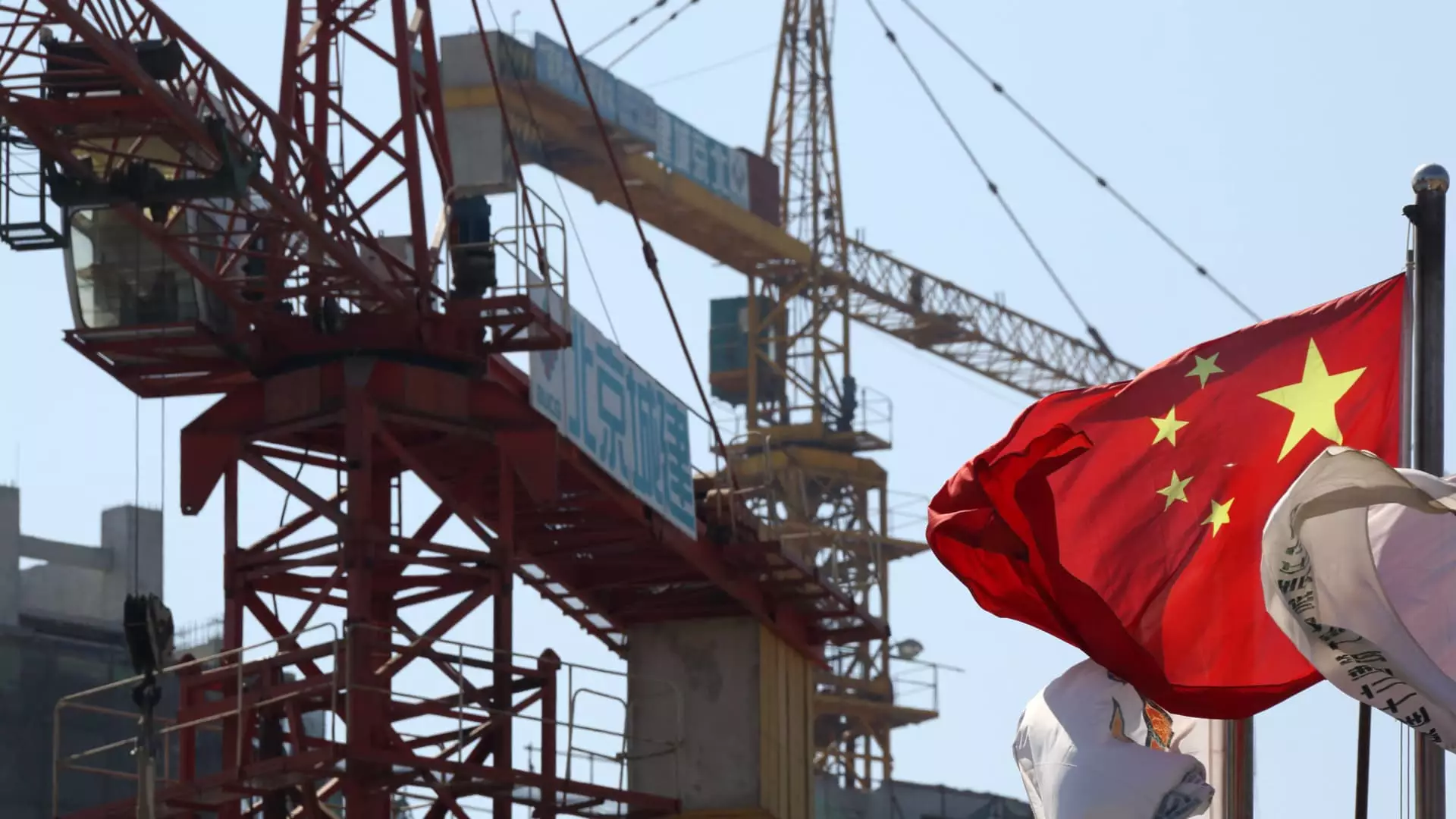China’s economy stands at a crossroads, grappling with a medley of challenges that threaten its long-term growth trajectory. Despite the recent implementation of stimulus measures, projections indicate a decline in the growth rate, unsettling both domestic and international stakeholders. The World Bank’s economic outlook suggests that China’s growth rate will dip to 4.3% in 2025, a troubling forecast that raises questions about the sustainability of its recovery efforts.
Recent governmental initiatives aimed at revitalizing the economy have sparked temporary optimism. With the initial forecasts for 2024 creeping up to 4.8%—a slight improvement attributed to increased investor confidence—the reality paints a more complex picture. The stimulus has primarily centered on monetary policy, but the tangible benefits appear to be fleeting. Aaditya Mattoo, the East Asia and Pacific chief economist at the World Bank, underscored the inadequacy of these measures to address deep-rooted consumer concerns regarding declining wages and job security. As Mattoo notes, the effectiveness of stimulus packages largely hinges on their ability to alleviate public anxieties surrounding financial stability and overall economic health.
Consumer Behavior and Market Dynamics
Chinese consumer spending remains subdued, a fact that the World Bank directly correlates with rising economic insecurities. Issues such as ongoing property market weakness, an aging demographic, and increasing global tensions contribute to a consumer landscape fraught with apprehension. JPMorgan’s James Sullivan highlights a critical question: will the stimulus measures merely boost the supply side of the economy, or will they catalyze a resurgence in consumer demand? Current expectations lean towards the former, suggesting that without a shift in consumer sentiment, the anticipated recovery may remain an elusive goal.
The potential for economic recovery does not solely rest on monetary stimulus; it is also entangled with political dynamics, both domestically and internationally. Hui Shan from Goldman Sachs emphasizes that the forthcoming U.S. presidential election and the possibility of supplementary stimulus initiatives will significantly influence China’s economic landscape in the following year. The unpredictability of such political events compounds the uncertainty surrounding China’s economic recovery.
Moreover, despite calls for substantial policy reforms, China’s National Development and Reform Commission seems reticent to announce any major new packages. While pledges to issue special purpose bonds indicate a willingness to act, without comprehensive and robust reforms focused on competition, infrastructure development, and education, the potential for long-term growth remains doubtful. As seen in Mattoo’s commentary, these structural reforms are essential for China to address the fundamental issues plaguing its economy.
Regional Implications and Future Outlook
The ripple effects of China’s economic performance extend far beyond its borders, profoundly impacting the broader East Asia and Pacific region. The World Bank estimates a growth rate of 4.7% for the region this year, with a slight elevation to 4.9% in 2025. However, the interconnectedness of economies means that a slowdown in China necessitates a search for new domestic growth drivers among its neighbors. As the region attempts to diversify its economic dependencies, the need for innovative strategies to maintain momentum has never been more critical.
While China’s stimulus measures may offer a fleeting reprieve, they are insufficient to address the structural challenges facing the economy. The World Bank’s assessment serves as a clarion call for bolder reforms that can pave the way for sustainable growth. As China navigates this tumultuous economic environment, the implications are destined to resonate across the Pacific, prompting stakeholders to adapt to an evolving economic landscape fraught with uncertainty.


Leave a Reply